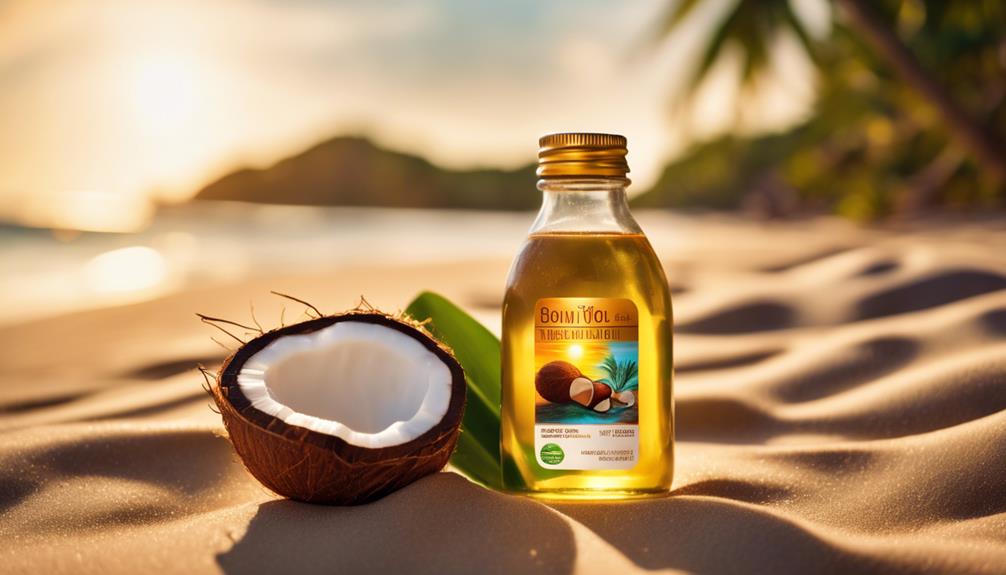Mastering safe tanning for fair skin involves gradually increasing sun exposure and being diligent about sun protection. Start with 10-15 minutes in the sun, gradually working up to a maximum of 30 minutes. Always apply a broad-spectrum sunscreen of at least SPF 30 to protect against harmful rays. After tanning, moisturize your skin to help it recover. Opt for bronzers with cool undertones to enhance your glow, making sure it’s slightly darker than your natural skin tone. It’s important to monitor how your skin reacts to tanning throughout the process. For more effective techniques and product recommendations, there is a lot more to explore.
Key Takeaways
- Start with gradual tanning techniques, limiting initial exposure to 10-15 minutes and increasing by 5 minutes each session.
- Always use a broad-spectrum sunscreen with at least SPF 30 and reapply every two hours.
- Monitor your skin type and reactions, adjusting tanning duration and frequency to prevent irritation.
- Choose bronzers with cooler undertones that are just darker than your natural skin tone for a more natural look.
Slow Tanning Techniques
Slow tanning techniques are vital for fair skin, as they allow individuals to gradually build a sun-kissed glow while minimizing the risk of sunburn and skin damage.
To achieve ideal results, it is advisable to begin with short bursts of sun exposure, starting with 10-15 minutes. Gradually increase exposure by 5 minutes per session, capping at a maximum of 30 minutes.
For safer tanning, aim for sun exposure during early morning or late afternoon hours. Additionally, using a high SPF sunscreen of at least SPF 30 is essential for skin protection.
It is important to monitor exposure times carefully and allow the skin to rest between sessions to prevent overexposure and maintain overall skin health.
Assessing Your Skin Type
Understanding your skin type is essential for effectively managing sun exposure and preventing potential burns, particularly for individuals with fair skin that is more susceptible to damage. Fair skin typically has lower melanin levels, resulting in a higher likelihood of sunburn.
It is vital to assess how your skin reacts to sun exposure by gradually increasing tanning duration and monitoring for signs of redness or irritation. Keeping a record of exposure times and skin reactions can help guide future tanning sessions.
If discomfort occurs, reduce tanning time and prioritize skin health. Additionally, immediate moisturization after tanning can alleviate dryness and support skin recovery, ensuring a safer tanning experience while minimizing the risk of adverse effects.
Choosing the Right Bronzer

Selecting the appropriate bronzer is essential for achieving a natural, sun-kissed glow without the risk of an orange undertone, particularly for those with fair skin.
Opt for bronzers with cooler undertones, such as honey or soft golden shades, which complement fair complexions. It is advisable to test bronzer shades on the jawline to ascertain a proper match and to select shades that are just a shade darker than your natural skin tone.
A matte finish is recommended to avoid excessive shine. Prior to application, exfoliating the skin creates a smooth canvas, enhancing bronzer adherence.
For a subtle glow, consider incorporating a hint of shimmer, which can elevate the overall appearance without overwhelming the delicate tone of fair skin.
Importance of Sun Protection
Prioritizing sun protection is essential for maintaining skin health, particularly for individuals with fair skin who are more susceptible to sunburn and long-term damage.
Using a broad-spectrum sunscreen with at least SPF 30 is vital to shield against harmful UVA and UVB rays. Regular application, ideally every two hours, enhances protection, especially during prolonged sun exposure.
Additionally, protective clothing, wide-brimmed hats, and sunglasses can complement sunscreen use, offering an additional layer of defense. Avoiding peak sun hours, typically between 10 a.m. and 4 p.m., further mitigates risks.
Skin Health and Tanning

Maintaining skin health while tanning involves not only protective measures against sun damage but also a mindful approach to exposure and skin care practices that cater specifically to fair skin.
Individuals with fair skin must prioritize sun protection, employing high SPF sunscreen and limiting exposure to prevent burns.
Gradual tanning techniques should be adopted, starting with short sessions and closely monitoring skin reactions to avoid adverse effects.
It is vital to hydrate the skin and apply moisturizers post-tanning to maintain its barrier.
Recording tanning sessions and adjusting based on the skin's response guarantees a safe tanning experience.
Ultimately, a combination of protective measures and attentive skin care is essential for achieving a healthy, sun-kissed glow without compromising skin integrity.
Tanning Bed Best Practices
Understanding the best practices for tanning beds is essential for fair-skinned individuals seeking to achieve a safe and effective tan without compromising skin health.
Begin by evaluating your skin type; those with fair skin should limit sessions to 10-15 minutes initially, gradually increasing exposure time to a maximum of 30 minutes.
Make sure to use high-quality tanning bed goggles to protect your eyes from UV rays.
It's advisable to wait at least 48 hours between tanning sessions to allow skin recovery.
Regularly moisturize your skin to maintain hydration and elasticity.
Additionally, consult with a tanning salon professional to select appropriate bed types and settings tailored for fair skin, guaranteeing a balanced approach to achieving your desired tan while prioritizing skin safety.
Current Trends in Tanning Products

Recent advancements in tanning products emphasize health and safety, catering specifically to the needs of fair-skinned individuals seeking a natural glow without compromising skin integrity.
Many brands now offer formulations enriched with skin-nourishing ingredients, such as antioxidants and hydrating agents, to enhance skin health while providing a bronzed appearance.
Self-tanners and gradual tanning lotions designed for fair skin feature lighter shades and cooler undertones, reducing the risk of an orange hue.
Furthermore, the emergence of innovative applicators, like mitts and sprays, facilitates even distribution, minimizing streaks.
Additionally, there is a growing awareness of eco-friendly and cruelty-free products, appealing to conscious consumers.
These trends reflect a shift towards safer, more effective tanning solutions tailored for delicate skin types.
How Can I Safely Tan if I Have Fair Skin?
If you have fair skin, you may want to consider using even tanning techniques and tips to safely tan. Start with a good quality sunscreen, gradually increase your sun exposure, and always stay hydrated. Consider using self-tanning products for a safer alternative to sunbathing.
Conclusion
In summary, mastering safe tanning techniques for fair skin necessitates an extensive understanding of skin health, appropriate products, and protective measures.
By adopting gradual tanning methods, carefully evaluating skin reactions, and utilizing high SPF sunscreen, individuals can achieve a desirable glow reminiscent of sun-kissed beach days of yore, while mitigating risks of damage.
As the tanning landscape evolves, embracing current trends in products and practices will guarantee that safety remains paramount in the pursuit of radiant skin.










